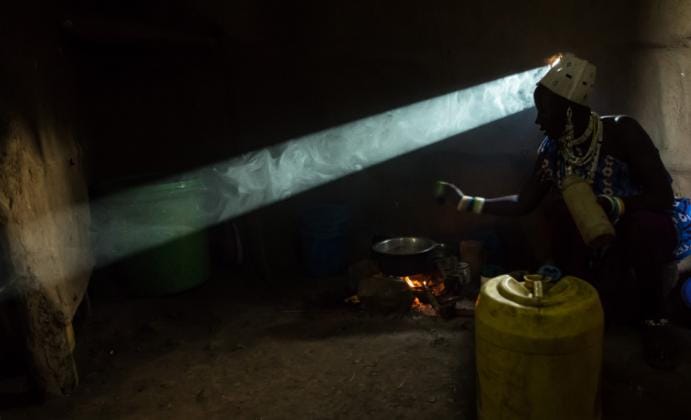

A new report on the effects of air pollution in East Africa has revealed a deepening crisis fueled by widespread reliance on solid fuels for cooking.
Despite international pledges to improve access to clean energy, East Africa is grappling with a deepening crisis.
As of 2020, approximately 95 per cent of households in the region relied on solid fuels such as wood, charcoal, dung, and crop residues for cooking.
"Clean cooking access remains limited in all countries except Kenya...less than 10 per cent of residents have access to clean cooking as of 2022," the report reads in part.
This widespread dependence, it says, exposes nearly 390 million people to harmful household air pollution (HAP), creating a silent but devastating public health emergency.
Countries including South Sudan, Burundi, and DRC remain severely underserved, with fewer than 25 per cent of their populations having access to electricity.
Kenya stands out with an electrification rate of 76.5 per cent yet even there, clean cooking adoption remains alarmingly low.
Across most East African nations, fewer than 10 per cent of residents use clean fuels like LPG, biogas, ethanol, or electric stoves.
In 2021 alone, household air pollution was responsible for an estimated 294,000 deaths, making it the region’s second leading cause of mortality.
Prolonged exposure to pollutants such as PM2.5 and black carbon—byproducts of burning solid fuels—contributes to respiratory illnesses, cardiovascular disease, and premature death, especially among women and children.
PM stands for particulate matter, referring to a mixture of tiny solid particles and liquid droplets found in the air. These particles can vary in size, composition, and origin, and they're often a key component of air pollution.
PM can cause or worsen respiratory and cardiovascular problems.
PM10 are particles with diameters of 10 micrometers or smaller, like dust, pollen or mold while PM2.5 are fine particles with diameters 2.5 micrometers or smaller basically from vehicle exhaust, industrial emissions, burning of wood or fossil fuels.
These can penetrate deep into the lungs and even enter the bloodstream.
Efforts to shift toward cleaner energy sources have faced significant hurdles.
Poverty, high fuel prices, inadequate infrastructure, and rapid population growth, it states, continue to undermine progress.
As a result, East Africa is currently off-track to meet the United Nations Sustainable Development Goal 7 on universal access to affordable, reliable, and modern energy by 2030.
It, however, notes that there are signs of momentum with the International Energy Agency’s 2024 Summit on Clean Cooking having secured more than $2 billion (Sh260 billion) in funding pledges aimed at expanding access to clean fuels across Africa.
According to the report, of these investments are deployed effectively, they could dramatically reduce disease burdens, cut carbon emissions, and improve quality of life for millions.
With strategic investments, policy reforms, and strong community engagement, East Africa can transition from energy poverty to clean energy leadership—unlocking a future of healthier people and a more sustainable planet.
The report by Health Effects Institute (HEI) summarises the current scientific evidence on the health effects of air pollution in East Africa.
It focuses on eight countries-Burundi, the DRC, Ethiopia,
Kenya, Rwanda, South Sudan, Tanzania, and Uganda.
The review was motivated by deliberations at a
scoping workshop in March 2023.
Workshop participants acknowledged the need to expand
the range of health studies measuring the effects of long-term exposure to air pollution in the region.
They also recognised that already available data could be used to promote evidence-based action.











